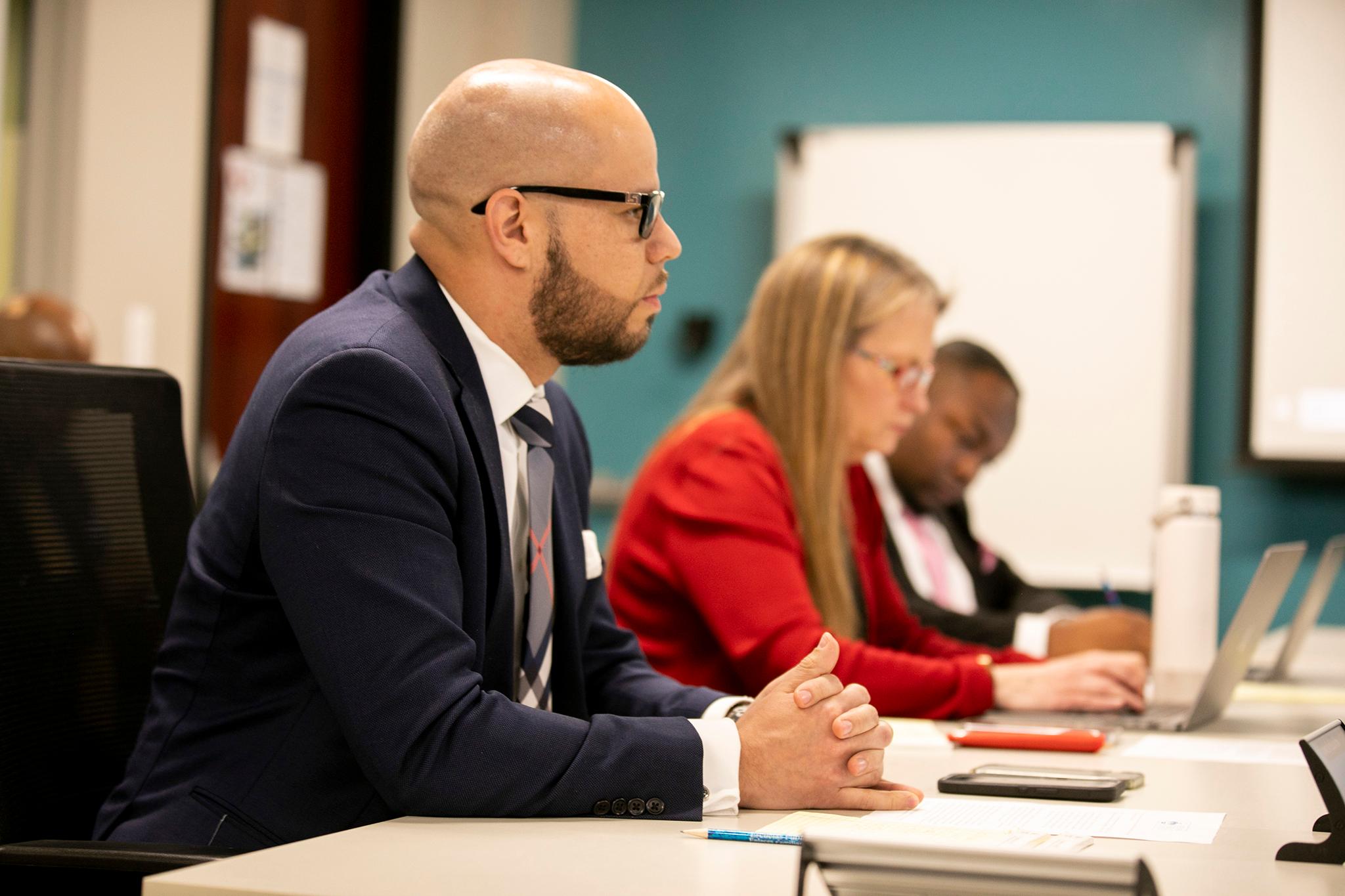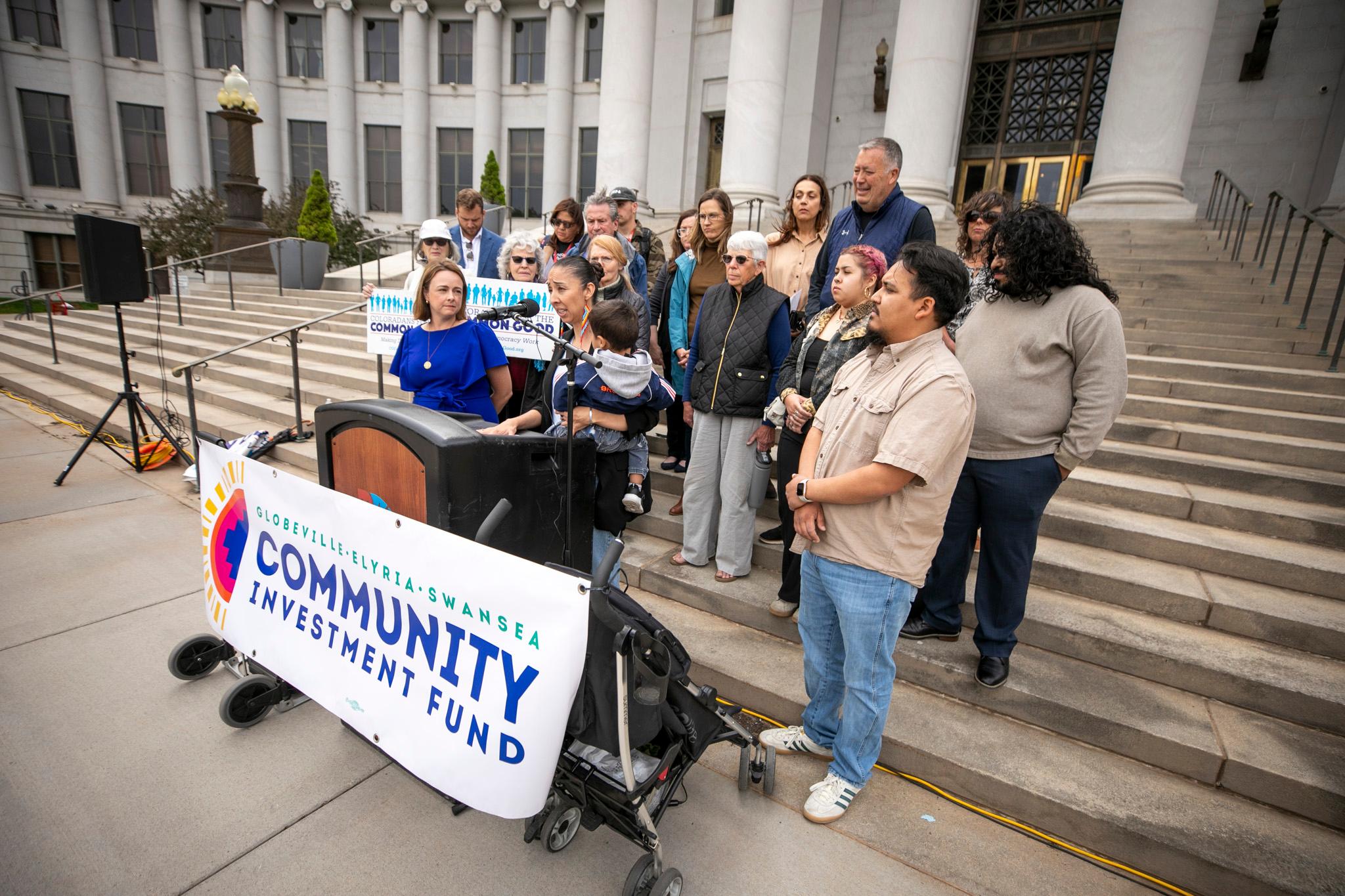Armed police will return to Denver schools, according to the final version of a safety plan written by Denver Public Schools Superintendent Alex Marrero that was released Friday.
School resource officers (SROs) will return to the 13 large high schools that had police this past spring, while the district decides longer term which secondary schools will have SROs. The Denver School Board directed Marrero to create the plan after a student shot two deans at East High School in March.
The school board voted to remove SROs from public schools in 2020 over concerns about racial profiling and systemic inequities. The board temporarily suspended that decision following the East High shooting. An earlier draft of Marrero's plan sent the final decision on SROs back to the school board, which voted four to three in June to bring police back to Denver Public Schools (DPS).
The new policy gives Marrero power to remove officers who do not follow best practices, and requires the Denver Police Department (DPD) to monitor citations and arrests and "take corrective action" if citations disproportionately affect marginalized groups. The board left the rest of the details about SROs up to Marrero, but some details like the number of officers or their exact responsibilities remain unclear.
Marrero wrote that DPS will take a "collaborative approach" with DPD to develop expectations and guidelines, though that will depend on the mayoral transition.
Marrero said the district plans to talk to Mayor-elect Mike Johnston and DPD Chief Ron Thomas about a new memo of understanding that will guide the districts work with DPD.
Through those conversations, Marrero said the district will "be able to address funding, also the requirements that we will put in place, which has to do with how we select but also interview those who will be permanently at these sites."
We reached out to Johnston for comment on the new safety plan but didn't immediately hear back. We'll update when we do.
The superintendent added that addressing the root issue of gun violence is an issue for the city as a whole and not just DPS.
"It's a lack of laws and lack of consequence issue..." Marrero said. "We've been dealing with a tremendous amount of violence and access to guns since my arrival, and I'm sure before that, so it's a city of Denver and community issue."
Marrero said another major change students will experience with the plan will be three mental health screenings throughout the coming year.
Other notable aspects of the plan include working to expand hybrid online school options, additional security support when conducting student searches and a safety audit of school buildings. The plan says decisions about weapons detection systems will be made after "extensive community engagement."
The final draft represents the third and final version of the plan following a number of community feedback sessions. DPS will work on implementing the plan in the coming months.
"I hope that people look beyond the three paragraphs that are devoted to SROs," Marrero said Friday. "In the plan, there are 57 pages, and I hope that the reader, our students and families, look at the social emotional efforts, the safety assessments and audits that we're going to [do], and also how we're going to screen for mental health needs and behavioral needs of students."
Like earlier drafts, much of the 57-page plan outlines DPS' existing safety protocols. Many of the new elements include expanded trainings and partnerships on things like safety and mental health.
On mental health, the plan says DPS will work to increase partnerships with mental health providers, and expand trainings and mental health session offerings for things like suicide prevention. DPS also plans to add nonprofits Servicios de la Raza and Care Solace as support partners for students, staff and families.
On physical safety, the plan includes things like shifting emergency operation plan information to a computerized system, new safety audits, improved communications to parents about school drills and more security staff for student searches.
The plan notes that police will not search students because laws require police to have "probable cause," something that does not apply to school officials.
"Police officers can only perform a small fraction of the searches that school officials can carry out," Marrero wrote in the plan. "Requiring police officers to conduct searches would have a negative impact on school safety."
In the plan, Marrero wrote that DPS decided not to include things like clear backpacks because research does not show they are effective, and that requests for smaller class sizes do not address widespread safety concerns.
The plan also lacks an outline for weapons detection systems, but leaves the door open for the future. Currently, DPS only uses weapons detection systems for athletic events and other events specifically requested by administrators.
"The determination of a weapon detection system at a school or district building will be a site-based decision with extensive community engagement," Marrero wrote in the plan.
In his proposed 2023-2024 budget, Marrero requested an additional $9 million in funding to implement the plan.
Of the $9 million, Marrero asked for $4 million in recurring general funds for long term safety costs and $5 million for capital expenditures on things like potential weapon detection systems and cameras.
The requested funds would potentially cover things like additional mental health screenings and support for students and staff, an online dashboard for various safety plans, safety upgrades to buildings and expanded hybrid online spots for students. DPS will also likely shoulder some of the SRO costs. Previously, DPS and DPD split SRO funding, costing the district around $750,000.
"The funds that were previously used for SRO's were redeployed for other Mental Health supports, and if those resources are to remain in the current use, additional funding would need to be identified," Marrero wrote in a letter about the fiscal impacts of the safety plan. "The funds set aside for the safety plan could be used in this capacity."
Marrero added that if DPS were to decide to bring in weapons detection systems for schools in the future, those costs would likely exceed the $5 million identified for capital expenditures.
The decision to bring police back to DPS high schools, and the subsequent safety plan, has faced pushback from people worried about racial profiling by police.
School board members, DPS staff and families have remained split over the role of police in schools. In the wake of the March shooting at East High, and just weeks after East High student Luis Garcia was shot outside the same school and died weeks later, many parents and staff called for stronger safety measures including police and metal detectors. Garcia's family has asked for security in schools.
But advocates to remove SROs in 2020 pointed to data showing that DPD arrested and ticketed Black and Latino students at higher rates. In 2019, a safety official handcuffed a seven-year-old student, and during a school search in 2018 police pointed a gun at a teacher during a school search. While advocates of SROs hope they will prevent students from bringing weapons to school to begin with, opponents have pointed to a number of school shootings, and shootings in downtown Denver in general, in which police did not stop gun violence.
"The militarization of our schools is not the answer to the complex issues we face," wrote school board Vice President Auon'tai M. Anderson, who led the 2020 effort to remove SROs and voted against their return in June. "It is a short-term, surface-level solution that only serves to perpetuate the school-to-prison pipeline."











